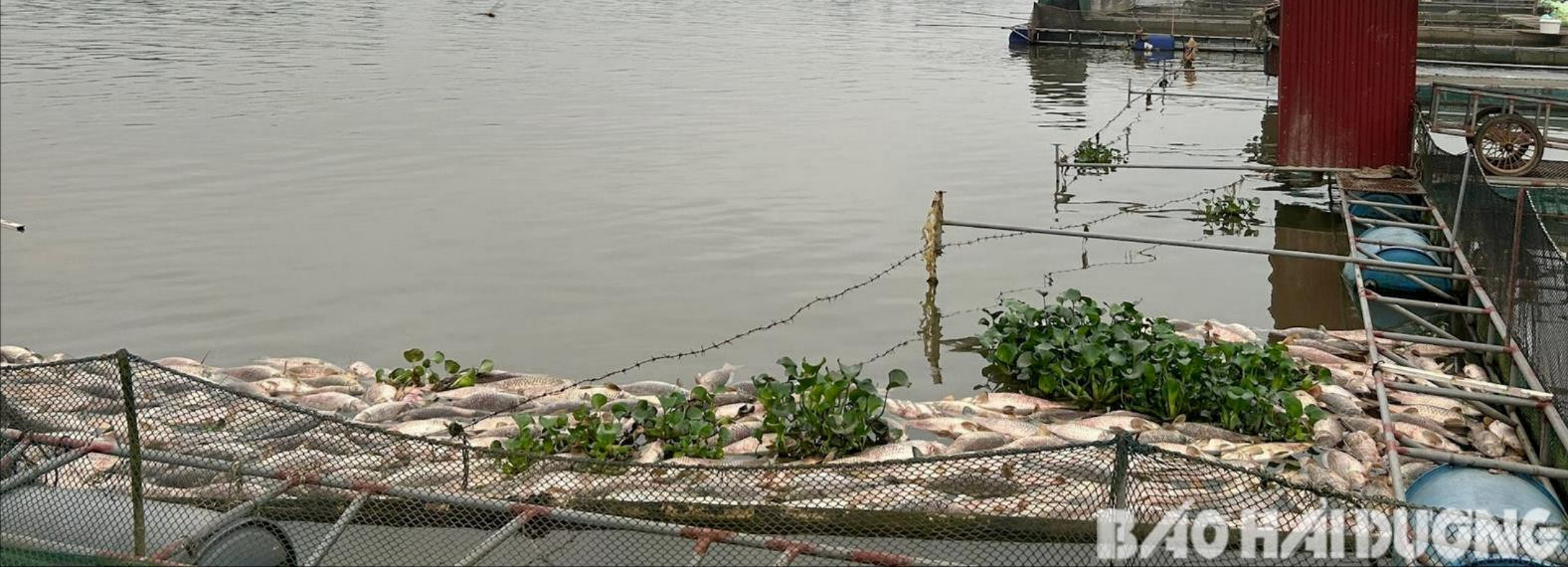When pets die, instead of burying or destroying them, many people in Hai Duong often throw the bodies into rivers, canals, and ditches, causing environmental pollution, water pollution, and even spreading disease.

Pollution of streams
Recently, on the Thai Binh River section through Hai Duong City, many households raising fish in cages suffered heavy losses when fish died en masse. According to the Department of Agriculture and Rural Development, from March 28 to April 8, about 400 households with more than 4,000 cages had dead fish, the amount of dead fish was estimated at 1,000 tons. About 30 households had dead fish accounting for more than 30% of the output, concentrated in Tien Tien Commune, Nam Dong Ward (Hai Duong City).
Although they have been collected, many dead fish are still floating in the Sat River in Hai Duong City. As soon as this phenomenon occurred, Hai Duong Urban Works Management Joint Stock Company sent staff and equipment to help collect the fish. However, due to the large number of dead fish, there are still dead fish floating near the riverbank, some of which decompose and cause unpleasant odors, affecting the lives of people in the surrounding area.
Unlike fish deaths due to objective factors, many people are still used to throwing dead animals into rivers, canals, and ditches as a way to dispose of garbage. When livestock and poultry die, many people just put them in plastic bags or sacks and then carelessly let them float down the river. Because they have been in the environment for a long time without being properly treated, the animal carcasses decompose, giving off a foul smell throughout the area.
Mr. Do Van Khanh, Zone 9, Ngoc Chau Ward (Hai Duong City) currently lives with his family on a small boat along the Thai Binh River. Because they live on the river, it is not uncommon for many dead animals to float next to the boat. “Some people put the dead animals in plastic bags or sacks, but some people throw the dead animals directly into the river. Once, a dead animal floated, the water rose and then receded, getting stuck on the embankment near my boat. 1-2 days later, the stench was so bad that the whole family went out to search for it and finally found it so they could bury it to reduce pollution,” Mr. Khanh recounted.
According to Mr. Khanh, a few years ago, he saw a large sack floating on the river. Looking at the shape of the sack, he thought that someone might have been murdered and then thrown into the river. Not daring to touch the sack, Mr. Khanh and a few neighbors pulled it to shore and reported it to the local authorities. However, when the sack was opened, everyone saw that it was the body of a pig.
People throwing dead animals into rivers, canals, and streams not only pollutes the environment, but also poses a potential risk of spreading disease to animals that die from disease.
Propaganda alone is not enough.
.jpeg)
Hai Duong's river and canal system is quite extensive and spread throughout the province. Protecting water resources must come from the awareness of each citizen.
According to the leader of the Department of Environmental Protection (Department of Natural Resources and Environment), there are specific instructions for handling waste from dead animals, especially in cases of infected livestock and poultry that need to be handled according to regulations to avoid spreading disease. Decree 90/2017/ND-CP clearly stipulates a fine of 5-6 million VND for the act of transporting or dumping sick or dead livestock and poultry and their products into the environment. At the same time, it is mandatory to destroy animals, animal products, animal carcasses and their products...
Also according to regulations, the authority to handle this violation belongs to the People's Committee at the commune level, but in reality, although there have been many cases of people throwing animal carcasses into the river, the number of cases handled is very small, even non-existent because it is very difficult to identify the thrower.
To limit this situation, the only way is for relevant sectors and localities to strengthen propaganda and mobilize people not to throw dead animals into the river; attach the responsibility of those exploiting resources from the river to environmental protection and river protection. In particular, strengthen propaganda for livestock farming households, equip them with knowledge on handling dead animals according to procedures and regulations. Punish violations according to regulations and propagate on mass media.
PV